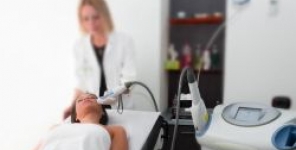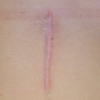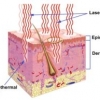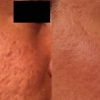Confronto diretto delle risposte molecolari in pelle umana foto-danneggiata da laser resurfacing frazionato ablativo
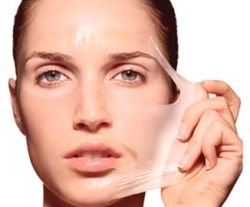 Il laser resurfacing frazionato ablativo è diventato una modalità di trattamento ampiamente usata. I suoi risultati clinici si trovano spesso ad affrontare quelli del tradizionale laser resurfacing completamente ablativo.
Il laser resurfacing frazionato ablativo è diventato una modalità di trattamento ampiamente usata. I suoi risultati clinici si trovano spesso ad affrontare quelli del tradizionale laser resurfacing completamente ablativo.
OBIETTIVO:
Confrontare direttamente i cambiamenti molecolari che risultano dal laser resurfacing a biossido di carbonio (CO(2) ) frazionato e completamente ablativo nella pelle umana foto-danneggiata.
MATERIALI E METODI:
La pelle foto-danneggiata di 34 volontari adulti è stata trattata focalmente in siti distinti con un laser CO(2) completamente ablativo e con un laser CO(2) frazionato. Campioni seriali di pelle sono stati ottenute al basale e in vari momenti dopo il trattamento. Per quantificare le risposte molecolari di ciascun tipo di trattamento laser sono state usate la tecnologia della reazione a catena con polimerasi trascrittasi inversa in tempo reale e l'immunoistochimica.
RISULTATI:
Laser resurfacing CO(2) frazionato e completamente ablativo ha indotto un rimodellamento dermico significativo e un'induzione del collagene. Dopo un singolo trattamento, il laser resurfacing frazionato ablativo ha provocato un'induzione del collagene che è stato circa dal 40% al 50% come dichiarata da quello indotto dal laser resurfacing completamente ablativo.
CONCLUSIONI:
Le risposte cutanee fondamentali che derivano dal laser resurfacing a biossido di carbonio frazionato e completamente ablativo sono simili ma si differenziano in grandezza e durata, con la procedura completamente ablativa che induce cambiamenti relativamente migliori tra cui un'induzione di collagene più pronunciata. Tuttavia, i dati molecolari qui riportati forniscono un sostegno sostanziale per il laser resurfacing frazionato ablativo come modalità di trattamento efficace per migliorare la struttura della pelle.
Storia della pubblicazione:
Titolo: Direct Quantitative Comparison of Molecular Responses in Photodamaged Human Skin to Fractionated and Fully Ablative Carbon Dioxide Laser Resurfacing.
Rivista: Dermatol Surg. 2012 Jul 17. doi: 10.1111/j.1524-4725.2012.02518.x
Autori: Orringer JS, Sachs DL, Shao Y, Hammerberg C, Cui Y, Voorhees JJ, Fisher GJ.
Affiliazioni: Department of Dermatology, School of Medicine, University of Michigan, Ann Arbor, Michigan.
Abstract:
BACKGROUND:
Fractionated ablative laser resurfacing has become a widely used treatment modality. Its clinical results are often found to approach those of traditional fully ablative laser resurfacing.
OBJECTIVE:
To directly compare the molecular changes that result from fractionated and fully ablative carbon dioxide (CO(2) ) laser resurfacing in photodamaged human skin.
METHODS AND MATERIALS:
Photodamaged skin of 34 adult volunteers was focally treated at distinct sites with a fully ablative CO(2) laser and a fractionated CO(2) laser. Serial skin samples were obtained at baseline and several time points after treatment. Real-time reverse transcriptase polymerase chain reaction technology and immunohistochemistry were used to quantify molecular responses to each type of laser treatment.
RESULTS:
Fully ablative and fractionated CO(2) laser resurfacing induced significant dermal remodeling and collagen induction. After a single treatment, fractionated ablative laser resurfacing resulted in collagen induction that was approximately 40% to 50% as pronounced as that induced by fully ablative laser resurfacing.
CONCLUSIONS:
The fundamental cutaneous responses that result from fully ablative and fractionated carbon dioxide laser resurfacing are similar but differ in magnitude and duration, with the fully ablative procedure inducing relatively greater changes including more pronounced collagen induction. However, the molecular data reported here provide substantial support for fractionated ablative resurfacing as an effective treatment modality for improving skin texture.
